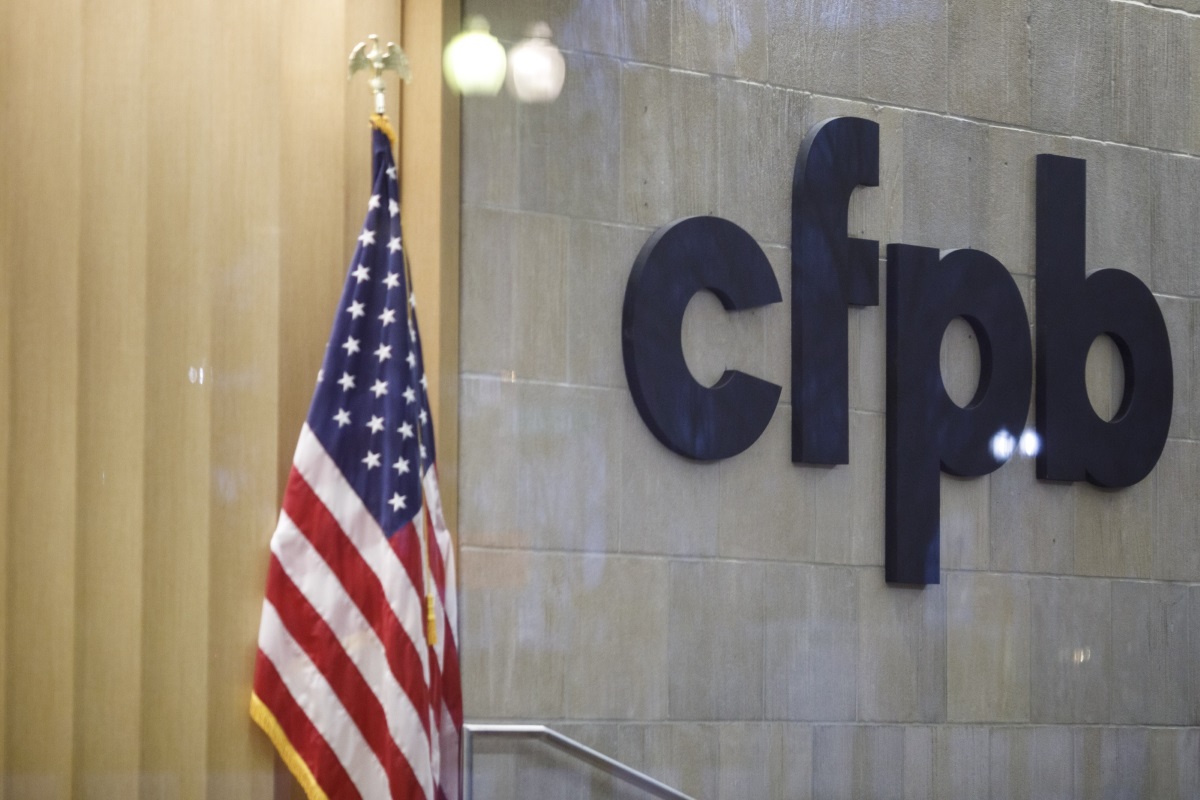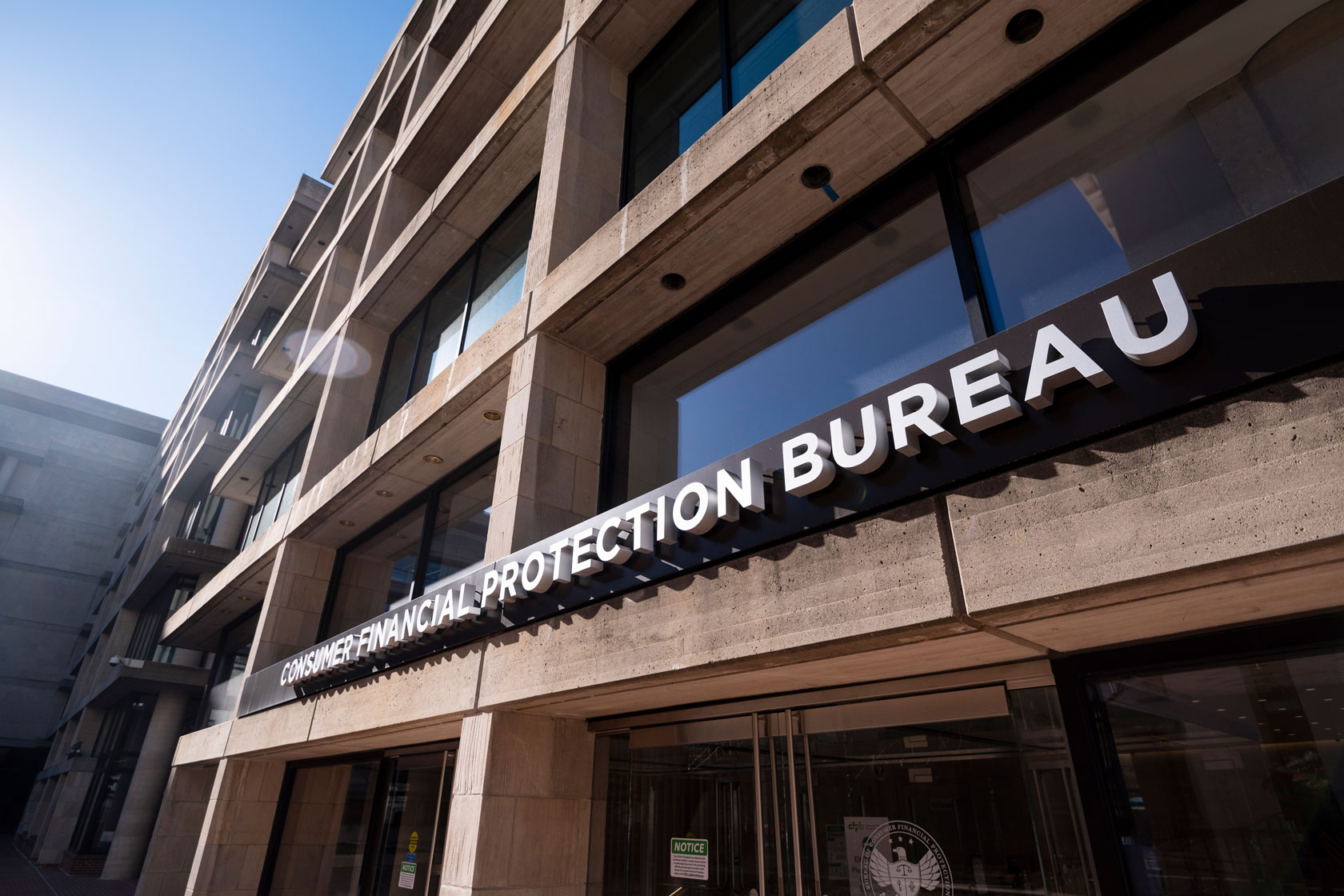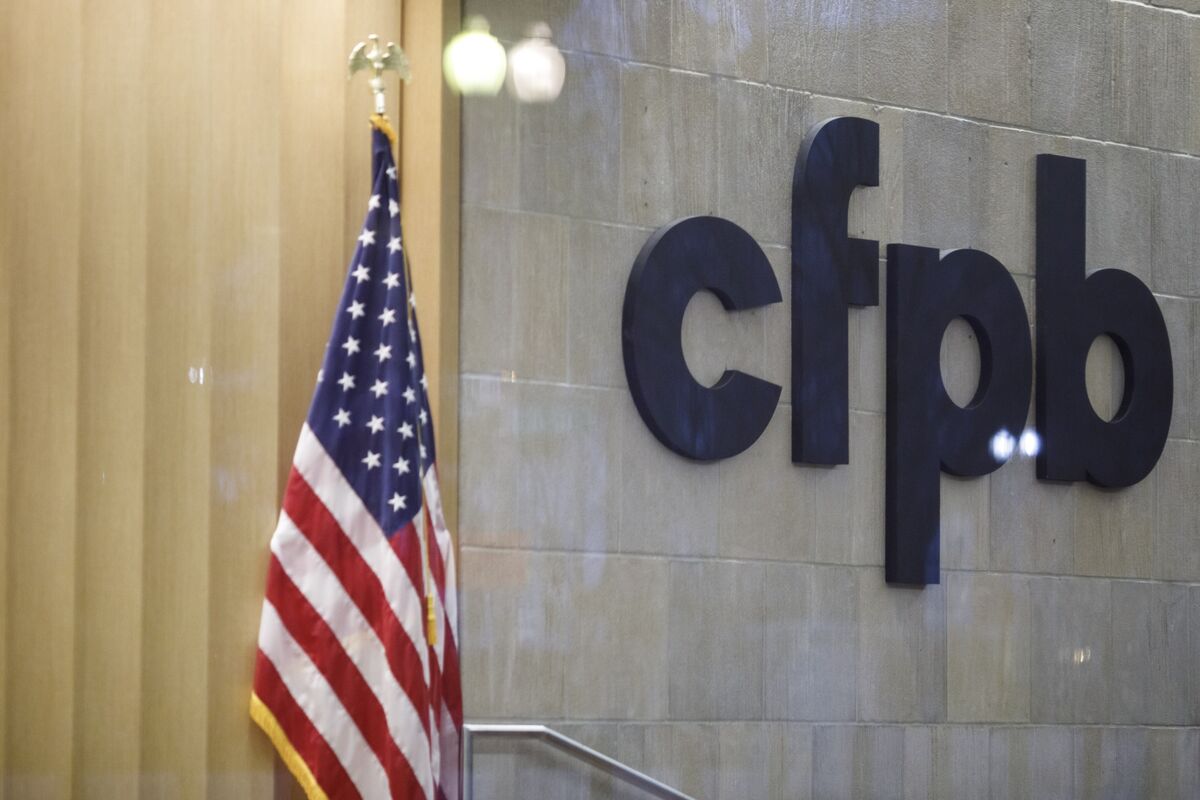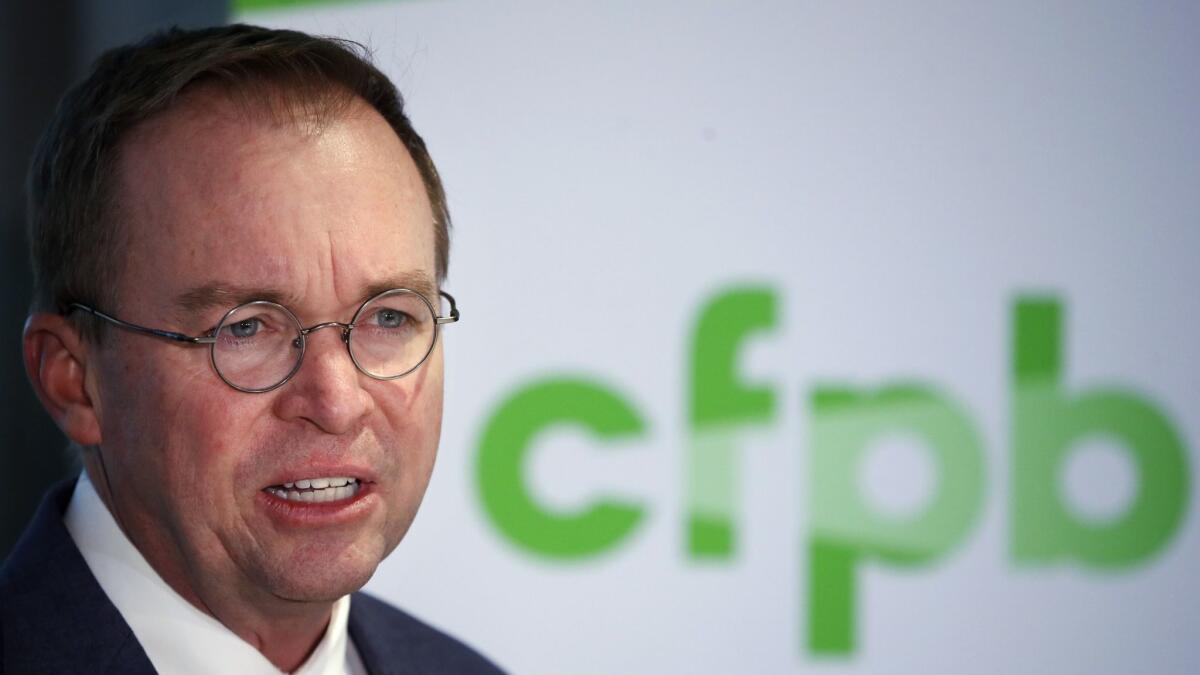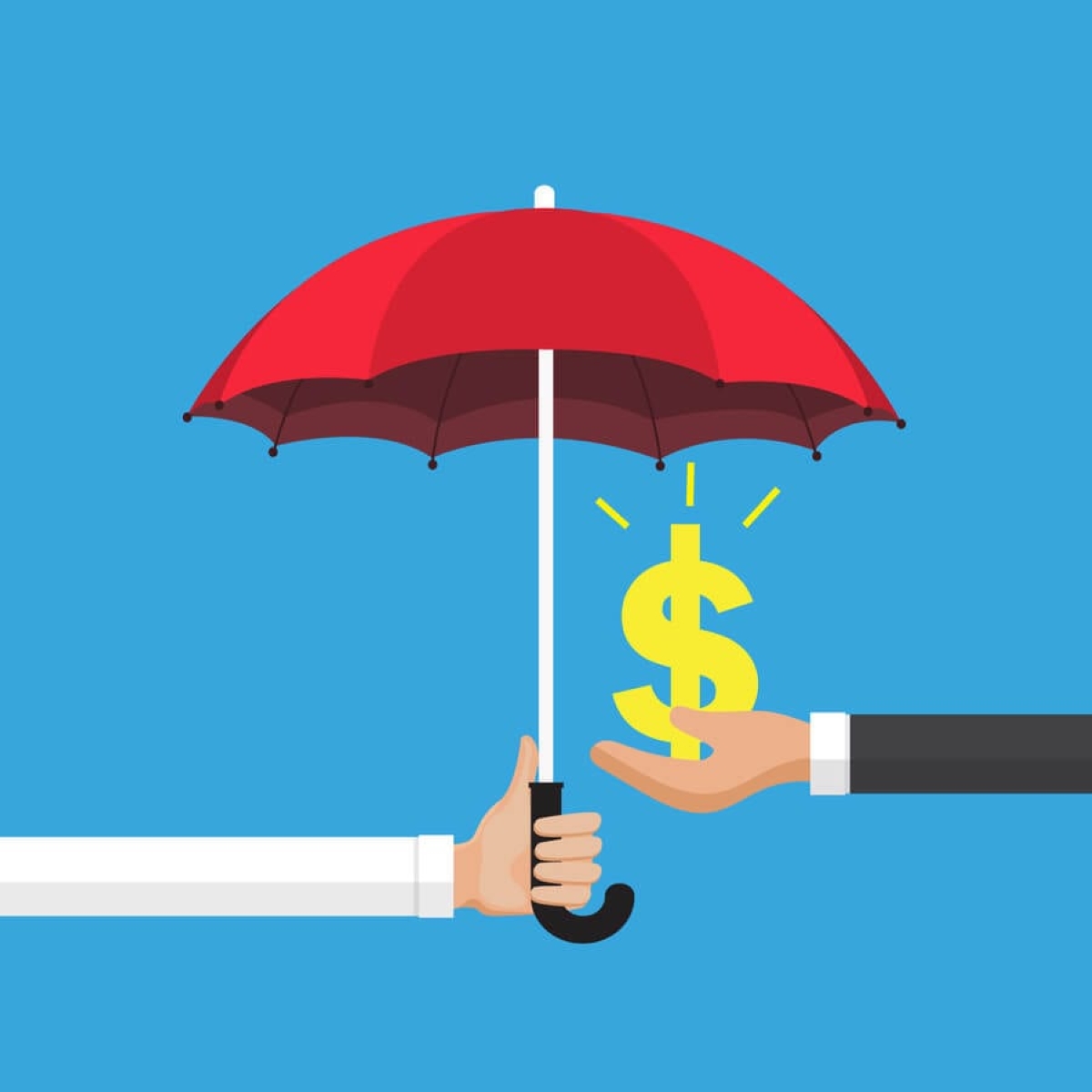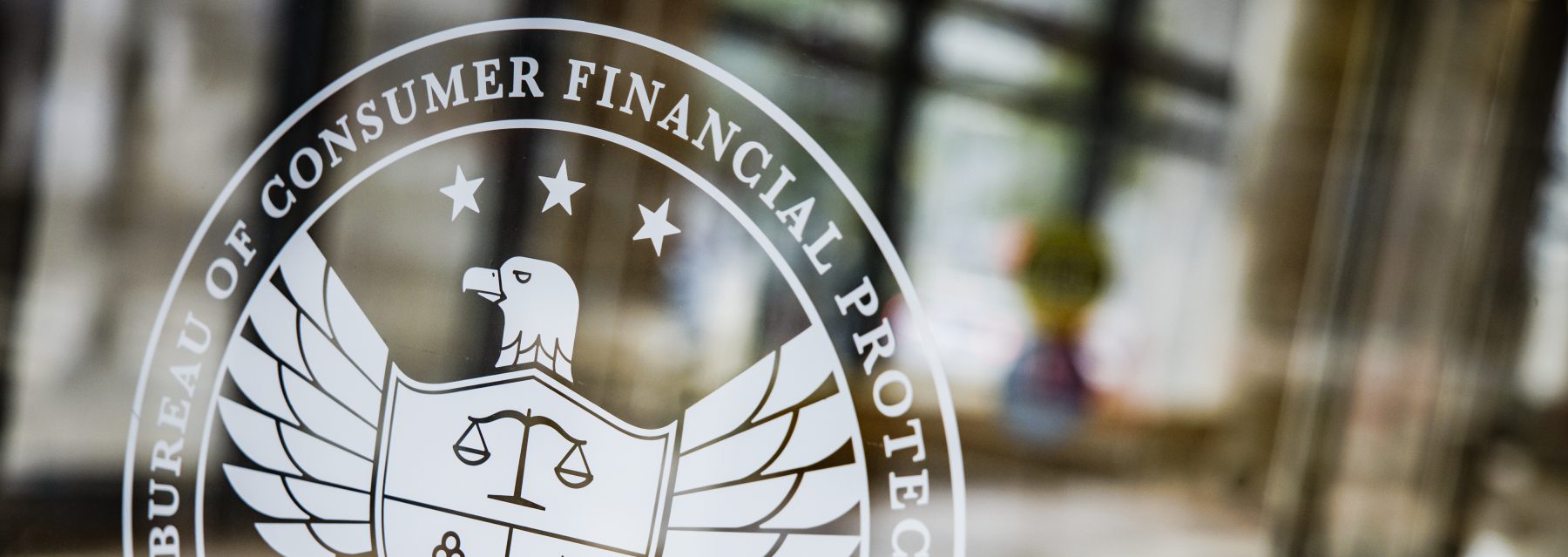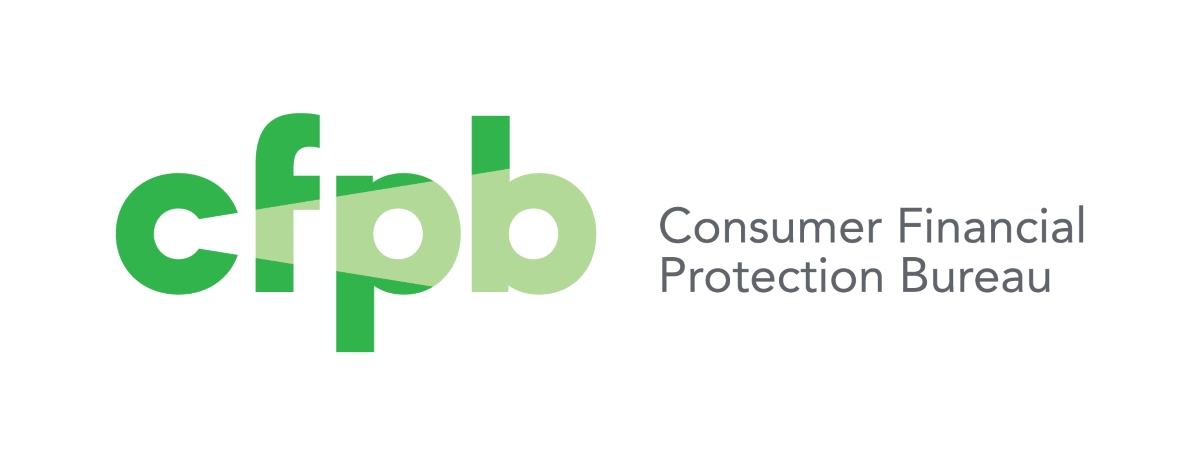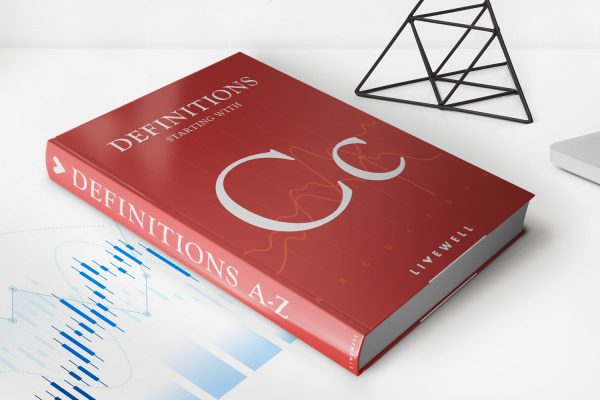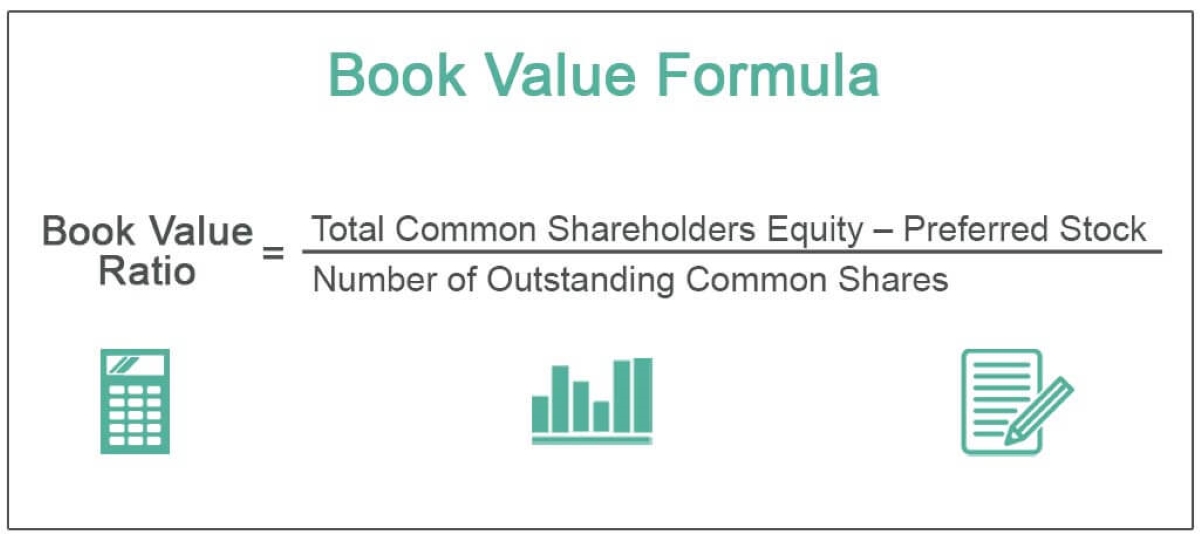Home>Finance>How Does The Consumer Financial Protection Bureau Define Mortgage Loan Default
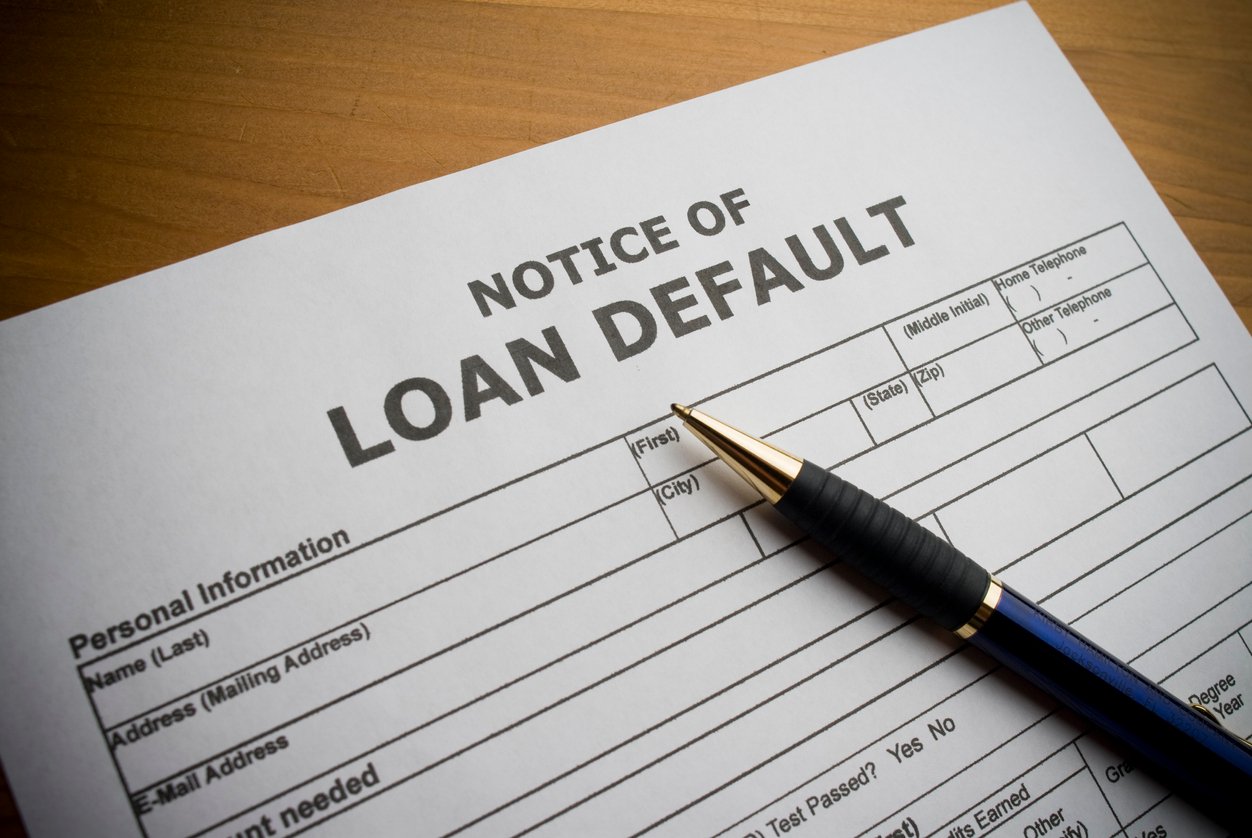

Finance
How Does The Consumer Financial Protection Bureau Define Mortgage Loan Default
Modified: December 30, 2023
Learn how the Consumer Financial Protection Bureau (CFPB) defines mortgage loan default and its implications. Gain insights into the finance industry's regulations and guidelines.
(Many of the links in this article redirect to a specific reviewed product. Your purchase of these products through affiliate links helps to generate commission for LiveWell, at no extra cost. Learn more)
Table of Contents
- Introduction
- Overview of the Consumer Financial Protection Bureau (CFPB)
- Definition of Mortgage Loan Default by the CFPB
- Types of Mortgage Loan Default
- CFPB’s Criteria for Mortgage Loan Default Determination
- Consequences of Mortgage Loan Default
- Factors Affecting Mortgage Loan Default
- Ways to Avoid or Resolve Mortgage Loan Default
- Conclusion
Introduction
When it comes to financial stability, mortgage loans often play a crucial role in the lives of many homeowners. However, life can sometimes throw unexpected challenges our way, making it difficult to keep up with mortgage payments. This can lead to a situation known as mortgage loan default.
In order to protect consumers and ensure fair practices within the lending industry, regulatory agencies like the Consumer Financial Protection Bureau (CFPB) have established guidelines and definitions for mortgage loan default. Understanding these definitions is essential for borrowers to navigate the intricacies of the mortgage landscape.
In this article, we will delve into the CFPB’s definition of mortgage loan default, the various types of defaults, the criteria used for determination, the consequences of default, and ways to avoid or resolve default situations.
Whether you are a homeowner facing potential default or simply seeking to expand your knowledge, this article will provide valuable insights into the world of mortgage loan default as defined by the CFPB.
Overview of the Consumer Financial Protection Bureau (CFPB)
The Consumer Financial Protection Bureau (CFPB) is a regulatory agency in the United States that was established under the Dodd-Frank Wall Street Reform and Consumer Protection Act of 2010. Its primary mission is to protect consumers in the financial marketplace and ensure fair and transparent practices by financial institutions.
The CFPB has jurisdiction over various sectors of the financial industry, including banks, credit unions, mortgage lenders, payday lenders, and debt collection agencies, among others. Its wide-ranging authority allows it to enforce federal consumer financial laws and regulations, conduct investigations, and provide educational resources to consumers.
One of the key responsibilities of the CFPB is to monitor and regulate mortgage lending practices to ensure that consumers are not subjected to predatory practices or deceptive lending practices. The agency aims to promote transparency and fairness in the mortgage market by setting standards for lenders and providing consumers with the necessary information to make informed decisions.
Through its consumer complaint database, the CFPB allows consumers to report issues and problems related to financial products and services, including mortgage loans. This platform serves as a valuable resource for consumers to seek assistance and for the CFPB to identify potential areas of concern and take appropriate action.
The CFPB also conducts regular examinations of financial institutions to ensure compliance with consumer protection laws and regulations. These examinations help identify any violations or unfair practices and enable the agency to impose penalties and take corrective actions when necessary.
Overall, the CFPB serves as a vital resource and advocate for consumers in the financial marketplace. By providing oversight, enforcement, and educational resources, the agency is dedicated to creating a fair and transparent financial system for all individuals.
Definition of Mortgage Loan Default by the CFPB
When borrowers fail to make their mortgage loan payments as agreed upon in the loan agreement, it can result in a situation known as mortgage loan default. The Consumer Financial Protection Bureau (CFPB) provides a specific definition for mortgage loan default, which helps establish guidelines and parameters for lenders and consumers.
According to the CFPB, a mortgage loan is considered in default when the borrower fails to make payments for a specific period of time, typically after 120 days or more. This period can vary depending on the terms outlined in the loan agreement and may be subject to state laws as well.
It is important to note that the exact definition of mortgage loan default may vary among different lenders, mortgage programs, and loan servicing entities. However, the CFPB’s definition is widely recognized and serves as a reference point for determining default status.
Once a mortgage loan is in default, the lender may take various actions to address the default situation. These actions can range from notifying the borrower of the default and exploring potential solutions to initiating foreclosure proceedings.
It is essential for borrowers to be aware of the specific terms and conditions outlined in their loan agreements to understand the exact parameters that define default status. This knowledge can help borrowers take appropriate actions, seek assistance, and explore possible remedies before the situation escalates.
By establishing a clear and consistent definition of mortgage loan default, the CFPB aims to protect consumers from unjust practices, promote transparency within the lending industry, and provide borrowers with a framework for understanding and addressing default situations.
Types of Mortgage Loan Default
When it comes to mortgage loan default, there are different types that borrowers may encounter. Understanding these types can help borrowers navigate their options and take appropriate actions to address the default situation. Here are the main types of mortgage loan default:
- Payment Default: This type of default occurs when a borrower fails to make a regular monthly mortgage payment. It can be a result of financial hardship, unexpected expenses, or other factors that make it difficult for the borrower to meet their payment obligations.
- Partial Default: In a partial default, the borrower makes payments that are less than the agreed-upon amount. This can occur when the borrower is struggling financially and can only pay a portion of the monthly payment. While it is not a complete failure to make payments, it still puts the borrower at risk of default.
- Technical Default: A technical default happens when the borrower violates a specific term or condition of the loan agreement. This can include failure to maintain proper property insurance, failure to pay property taxes, or other breaches of contractual obligations. While it may not involve missed payments, it can still trigger default actions from the lender.
- Statutory Default: This type of default occurs when a borrower fails to meet certain legal requirements set by the state or federal regulations. For example, if the borrower fails to comply with the foreclosure process outlined by the state, it can result in a statutory default and expedite the foreclosure proceedings.
- Strategic Default: Strategic default happens when a borrower intentionally decides to default on their mortgage loan, usually due to a significant decrease in the value of the property. This can occur when the outstanding balance on the loan is significantly higher than the current market value of the property, making it financially unfavorable for the borrower to continue making payments.
It is important for borrowers facing any type of mortgage loan default to assess their situation and seek advice from professionals, such as housing counselors or attorneys, to fully understand their rights and explore potential options for resolution. Taking proactive steps and seeking assistance can help borrowers navigate the complexities of default and potentially find a solution that works for their specific circumstances.
CFPB’s Criteria for Mortgage Loan Default Determination
The Consumer Financial Protection Bureau (CFPB) has established criteria to determine when a mortgage loan is considered to be in default. These criteria help lenders and borrowers understand the conditions under which default is triggered and the potential consequences that may follow. Here are the key criteria used by the CFPB to determine mortgage loan default:
- Missed Payments: The CFPB considers missed payments as a primary indicator of default. Generally, if a borrower fails to make payments for a specific number of consecutive months, typically after 120 days or more, it is a strong indication of default status.
- Severity and Duration of Delinquency: The CFPB takes into account the severity and duration of delinquency when assessing default. If a borrower consistently misses payments over an extended period of time, it demonstrates a more serious default situation compared to a one-time missed payment.
- Loan Modification or Workout Efforts: The CFPB considers the borrower’s efforts to resolve the default situation through loan modification or workout arrangements. If the borrower has actively engaged in discussions with the lender to modify the terms of the loan or explore alternative payment arrangements, it may influence the CFPB’s determination of default.
- Default Notice and Foreclosure Proceedings: The initiation of default notices and foreclosure proceedings is a significant factor in the CFPB’s assessment of default. If the lender has taken legal action to enforce the terms of the loan due to non-payment, it reinforces the default status.
- Loan Repayment Capacity: The CFPB may consider the borrower’s ability to repay the loan based on their financial situation. Factors such as income, debt-to-income ratio, and overall financial stability are evaluated to determine if the borrower is capable of meeting their payment obligations.
It is important for borrowers to review their loan agreements and understand the specific criteria used by their lenders to determine default. By familiarizing themselves with the CFPB’s criteria and their lenders’ specific guidelines, borrowers can better assess their situation and take appropriate actions to address default or prevent it from occurring in the first place.
Seeking professional advice from housing counselors or attorneys can also be beneficial in understanding the criteria and exploring potential options for resolution. Taking proactive steps and seeking assistance can help borrowers navigate the complexities of default and potentially find a solution that works for their specific circumstances.
Consequences of Mortgage Loan Default
Mortgage loan default can have serious consequences for borrowers. Understanding these consequences is crucial for borrowers to fully comprehend the potential impact on their financial well-being and housing stability. Here are some common consequences of mortgage loan default:
- Negative Impact on Credit Score: Defaulting on a mortgage loan can significantly damage a borrower’s credit score. Late payments and default are reported to credit bureaus, resulting in a lower credit score. A lower credit score can make it challenging to obtain future loans or credit at favorable terms.
- Foreclosure: Default can lead to foreclosure, the legal process by which the lender repossesses the property and sells it to recover the outstanding loan balance. Foreclosure can result in the loss of homeownership and eviction from the property.
- Legal Consequences: Defaulting on a mortgage loan can have legal ramifications. The lender may initiate legal action to recover the outstanding debt, which can result in lawsuits and court judgments against the borrower. These legal consequences can further exacerbate the financial burden on the borrower.
- Financial Loss: Defaulting on a mortgage loan can lead to significant financial loss for the borrower. In addition to the outstanding loan balance, borrowers may be responsible for foreclosure costs, legal fees, and other related expenses. Moreover, the borrower may experience a loss in equity if the property is sold for less than the outstanding loan balance.
- Difficulty in Obtaining Future Loans: Defaulting on a mortgage loan can make it challenging to secure loans in the future. Lenders are less likely to approve loans for borrowers with a history of default, and if approved, the borrower may be subject to higher interest rates and less favorable terms.
- Emotional and Psychological Impact: The consequences of mortgage loan default can also have a significant emotional and psychological impact on borrowers. The stress of potential foreclosure, loss of homeownership, and financial difficulties can lead to anxiety, depression, and other mental health issues.
It is important for borrowers facing default to seek assistance and explore potential options to avoid or resolve the default situation. Working with housing counselors, attorneys, or other professionals can help borrowers understand their rights, explore loan modification or repayment plans, or seek foreclosure alternatives.
By taking proactive steps and seeking help, borrowers can mitigate the potential consequences of mortgage loan default and work towards finding a solution that best suits their individual circumstances.
Factors Affecting Mortgage Loan Default
Mortgage loan default can be influenced by multiple factors that impact a borrower’s ability to make timely payments. Understanding these factors can help borrowers assess their risk of default and take proactive measures to mitigate them. Here are some key factors that can affect mortgage loan default:
- Financial Hardship: Personal financial challenges, such as job loss, reduced income, medical expenses, or unexpected emergencies, can greatly increase the risk of mortgage loan default. When borrowers face financial hardships, it becomes difficult to keep up with monthly mortgage payments, leading to default.
- High Debt-to-Income Ratio: Borrowers with a high debt-to-income ratio may be more susceptible to default. When a significant portion of the borrower’s income is allocated towards debt payments, including credit card debt, student loans, or auto loans, it leaves less room for mortgage payments, increasing the likelihood of default.
- Property Value: The value of the property securing the mortgage loan can have an impact on default risk. If the value of the property declines significantly below the outstanding loan balance, borrowers may be more inclined to default, especially if they perceive the property as a financial burden.
- Lack of Financial Education: A lack of financial literacy and understanding of the mortgage loan terms and obligations can contribute to default risk. Borrowers who are not well-informed about the terms of their loan, the potential consequences of default, and the options available to them may be more susceptible to default.
- Loan Type and Interest Rate: The type of mortgage loan and the interest rate can impact default risk. Adjustable-rate mortgages or loans with high-interest rates may become unaffordable for borrowers if interest rates rise or if their financial situation deteriorates, increasing the risk of default.
- Housing Market Conditions: The overall health of the housing market can influence default risk. During periods of economic downturn or housing market instability, borrowers may be more vulnerable to default due to job losses, declining property values, or limited access to refinancing or loan modification options.
It is important for borrowers to assess these factors and take proactive steps to mitigate their risk of default. This can include maintaining a stable income, managing debt responsibly, seeking financial education, staying informed about the mortgage loan terms and options, and seeking assistance if facing financial difficulties.
By being proactive and addressing these factors, borrowers can reduce the likelihood of default and maintain financial stability throughout the life of their mortgage loan.
Ways to Avoid or Resolve Mortgage Loan Default
Defaulting on a mortgage loan can have severe consequences, but there are several proactive steps borrowers can take to avoid or resolve a default situation. It is crucial to understand the options available and take action as early as possible. Here are some effective ways to avoid or resolve mortgage loan default:
- Communication with the Lender: Open and honest communication with the lender is essential. If borrowers anticipate difficulties in making mortgage payments, they should proactively reach out to the lender and explain their situation. Lenders may be willing to explore options such as loan modification, forbearance, or repayment plans to help borrowers avoid default.
- Loan Modification: A loan modification involves adjusting the terms of the loan to make it more affordable for the borrower. This could include reducing the interest rate, extending the loan term, or forgiving a portion of the principal balance. Borrowers can work with their lenders or a HUD-approved housing counselor to explore loan modification options.
- Forbearance: Forbearance allows borrowers to temporarily suspend or reduce their mortgage payments if they are facing a short-term financial hardship. This can provide temporary relief and allow borrowers time to recover financially. It is essential to understand the terms and requirements of forbearance, as it may require repayment in a lump sum or added to future mortgage payments.
- Refinancing: Refinancing involves obtaining a new mortgage loan with more favorable terms to replace the current loan. This can lower monthly payments, reduce interest rates, or change the loan structure. However, refinancing may not be feasible if the borrower’s credit score has been affected by default.
- Sell the Property: If the borrower is unable to maintain mortgage payments and the property’s value is significantly lower than the loan balance, selling the property may be a viable option. This can help avoid foreclosure and minimize financial losses. However, it is important to coordinate with the lender and consider the impact on credit and future housing needs.
- Housing Counseling: Working with a HUD-approved housing counselor can provide valuable guidance and support. These counselors can help borrowers understand their options, negotiate with lenders, and develop a sustainable plan to avoid or resolve default. They can also provide financial education and help borrowers develop a budget or debt management plan.
It is crucial for borrowers to act promptly when experiencing financial difficulties to increase the chances of finding a successful resolution. Ignoring the issue or delaying action may lead to more severe consequences, such as foreclosure. Seeking assistance from professionals and maintaining open communication with the lender are key components of avoiding or resolving mortgage loan default.
By exploring these options and taking proactive measures, borrowers can regain control of their finances, avoid default, and maintain housing stability.
Conclusion
Mortgage loan default can have significant financial and emotional impacts on borrowers. However, by understanding the definition of mortgage loan default as defined by the Consumer Financial Protection Bureau (CFPB), borrowers can navigate the complexities of default and take proactive steps to avoid or resolve the situation.
The CFPB’s criteria for determining mortgage loan default help guide lenders and borrowers alike in assessing default status. Missed payments, severity and duration of delinquency, loan modification efforts, default notices, and loan repayment capacity all play a role in this determination.
Defaulting on a mortgage loan can lead to serious consequences, including a negative impact on credit scores, foreclosure, legal repercussions, financial losses, and difficulties in obtaining future loans. It is essential for borrowers to be aware of these potential ramifications and seek assistance when facing financial hardships or the risk of default.
However, borrowers have options available to avoid or resolve mortgage loan default. Open communication with the lender, exploring loan modification or forbearance, refinancing, selling the property, and seeking housing counseling are all effective strategies that can help borrowers regain control of their financial situation and prevent foreclosure.
In conclusion, being proactive, seeking assistance, and staying informed about the options and resources available are crucial elements in navigating the challenges of mortgage loan default. By taking the appropriate actions, borrowers can mitigate the negative consequences associated with default and work towards a stable and sustainable housing future.
